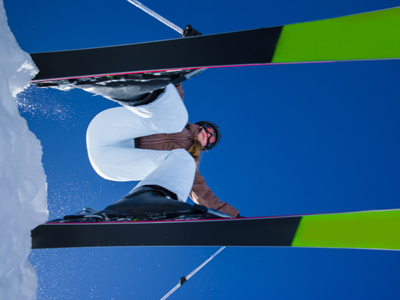As part of your high school geography study of the effects of ice on the landscape, you will have looked at at least one case study of an area where a landscape that is actively affected by snow and ice attracts tourists. One of the problems in such areas is the successful management of the avalanche danger.
Avalanches occur quite often in areas of high and regular snowfall because they are generally mountainous regions with steep slopes. There are two main types of avalanche caused as the snow slides off the sides of hills and mountains - slab avalanches and loose snow (powder) avalanches. When they occur near centers offering winter tourism, they can cause disruption, damage and loss of life.
Slab avalanches are the more dangerous type. This type of avalanche begins when a large area of compacted or partially-compacted snow suddenly breaks away from the mountain.
Snow itself is surprisingly heavy and it can also pick up boulders, trees and other debris, making it very destructive. When it stops, it immediately becomes a very solid mass meaning anyone buried in it will find it extremely difficult to move. It is almost impossible to save yourself from within a slab avalanche, most victims suffocate - the snow is so solid, no air can reach the victim. Winter sports resorts use specially-trained dogs and search teams to locate people who have been buried.
A loose snow avalanche generally starts in a small spot and causes a lot less damage. If you have ever watched video clips of extreme skiers or snowboarders descending steep slopes, you will have seen this type of avalanche.
There are many reasons why an avalanche starts - several different episodes of snowfall followed by heavy snow, deforestation allowing large snow slabs to build up and vibrations are just three of them. In winter resorts, avalanche experts monitor the snow conditions closely, looking at how the snow is layered, the bonding between snow layers and other factors in order to decide on the avalanche risk and ways in which they can be managed.
Explosions are used to trigger avalanches to clear slopes of dangerously unstable snow. Snow fences and barriers can be set up to deflect avalanches and to absorb a lot of the energy, reforestation of slopes has much the same effect. Land can be zoned to ensure that no building is carried out in the areas most at risk. Where a road or railroad track could be prone to avalanches, tunnels are built to allow any avalanches to pass harmlessly over.








